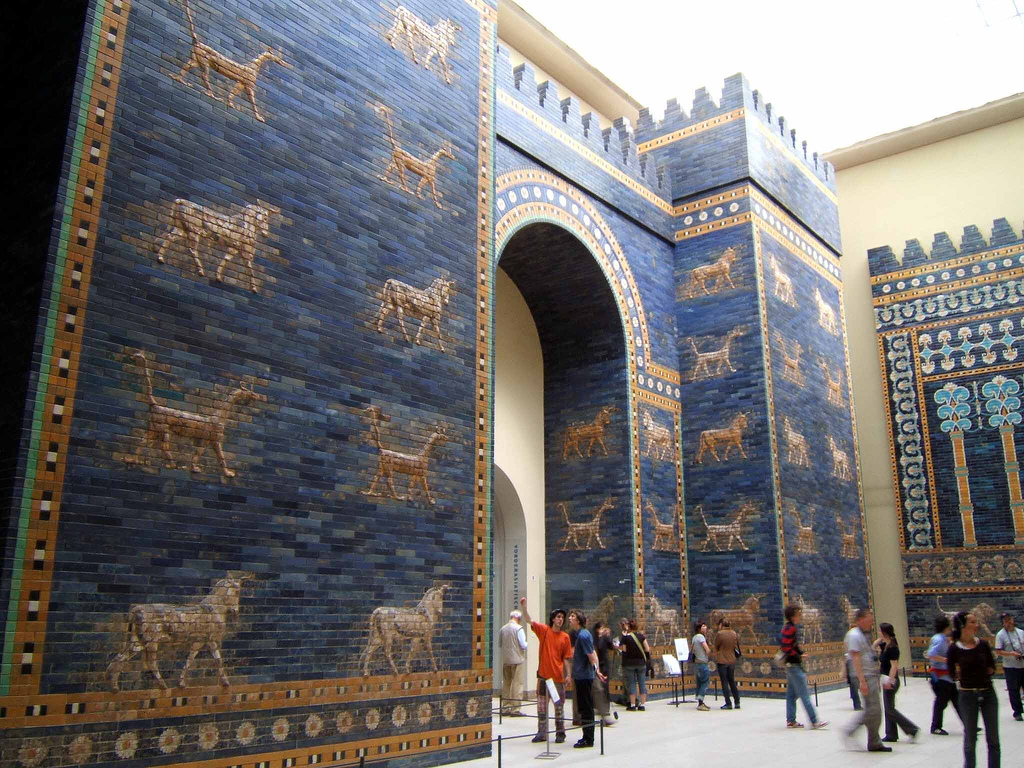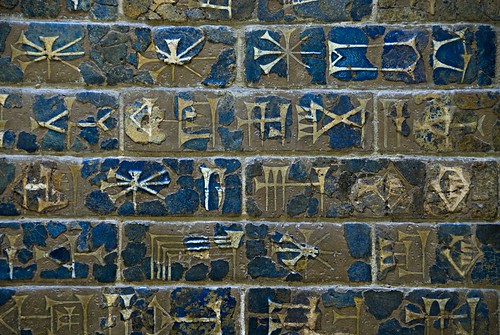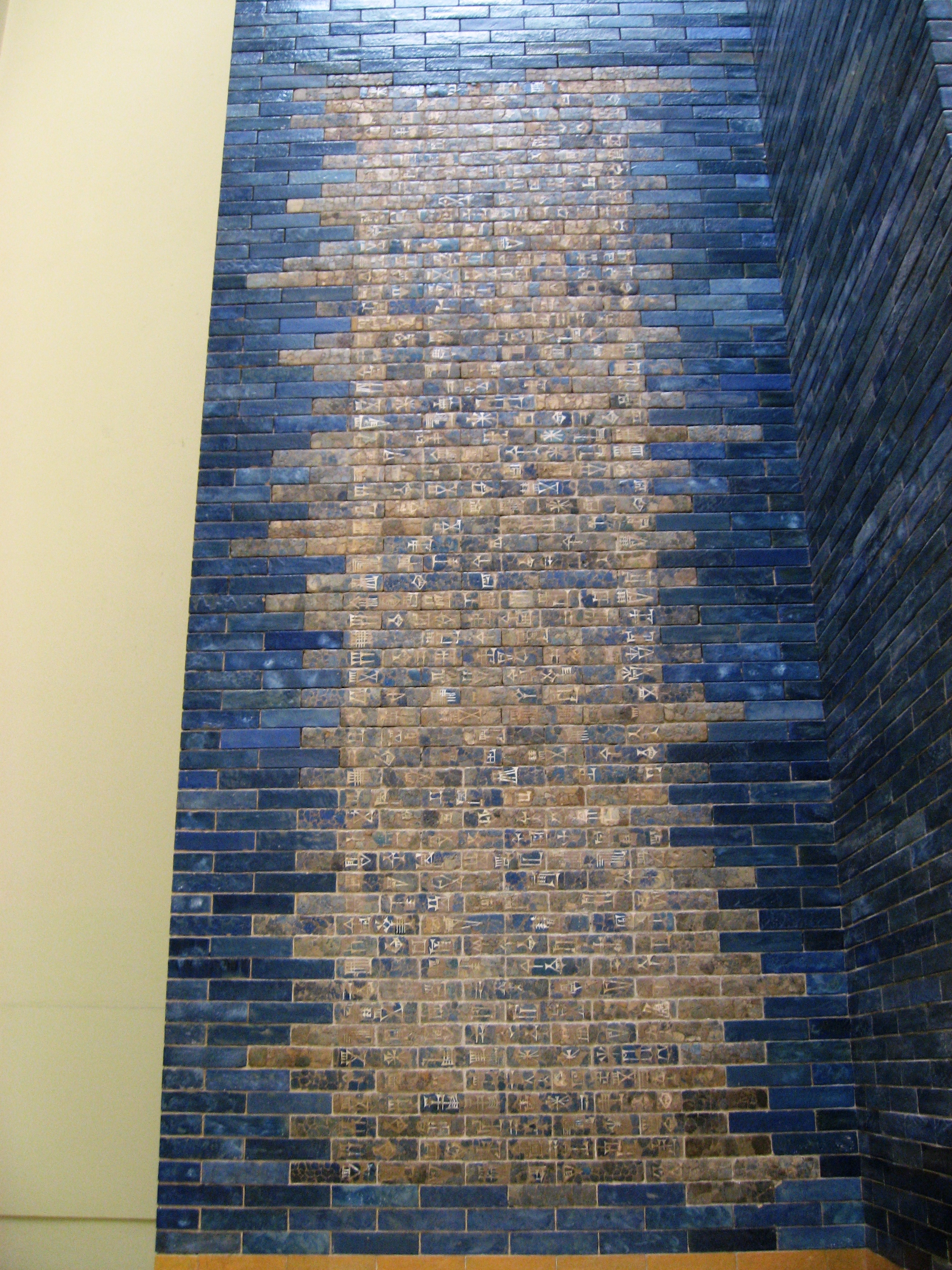The Ishtar Gate was constructed by the Babylonian King Nebuchadnezzar II circa 575 BCE. It was the eighth gate of the city of Babylon (in present day Iran) and was the main entrance into the city. The Ishtar Gate was part of Nebuchadnezzar's plan to beautify his empire's capital. During the first half of the sixth century BCE, he restored the temple of Marduk, built the renowned wonder: the Hanging Gardens as part of this plan. The magnificence of the Ishtar Gate was so well known that it made the list of the Seven Wonders of the Ancient World. However, it was replaced by the Lighthouse of Alexandria, but some authors (Antipater of Sidon and Calliamchus of Cyrene) still wrote that the "Gates of Ishtar" and "Walls of Babylon" should still be considered one of the wonders. Officially though, it never made on the list.
The Ishtar Gate and Deities
The Ishtar Gate is named so, because it was dedicated to the Babylonian goddess Ishtar. Although the gate is dedicated to Ishtar, Nebuchadnezzar pays homage to other Babylonian deities through animal representation. The animals represented on the gate are young bulls (aurochs), lions, and dragons (sirrush). These animals are symbolic representations of certain deities: lions are often associated with Ishtar, bulls with Adad, and dragons with Marduk. Respectively, Ishtar was a goddess of fertility, love, war, and sex, Adad was a weather god, and Marduk was the chief or national god of Babylon.
The Gate:
The front of the gate is adorned with glazed bricks with alternating rows of dragons and bulls. The beasts are furnished in yellow and brown tiles, while the bricks surrounding them are blue. The blue enameled tiles are thought to be of lapis lazuli, but there is some debate to this conjecture. The gates measured more than 38 feet high with a vast antechamber on the southern side.
 Processional Way:
Processional Way:
Through the gatehouse is Processional Way, which is a brick-paved corridor over half a mile long with walls over 50 feet tall on each side. The walls are adorned with over 120 sculptural lions, flowers, and enameled yellow tiles. The Processional Way was used for the New Year's celebration, through which statues of the deities would parade down. The Processional Way is a path paved with red and yellow stones (a rows of red stone on the outer layers and a yellow row in between). Each one of these stone has an inscription underneath: a small prayed from King Nebuchadnezzar to the chief god Marduk. It was this procession way that led to the temple of Marduk.
Excavation:
The Ishtar gate was excavated between 1902 to 1914 during which 45 feet of the original foundation of the gate was discovered. The material excavated by Robert Koldewey was used in a reconstruction of the Ishtar Gate and the Processional Way. In 1930, the reconstruction was finished at the Pergamon Museum in Berlin, Germany.
Reconstruction:
Due to size restrictions of the Pergamon museum, the Ishtar Gate is neither complete nor its original size. The gate was originally a double gate, but the Pergamon Museum only utlizes the smaller ,frontal part. The second gate is currently in storage. Originally the gate had a door and roof made of cedar and bronze, which was not built for the reconstruction. A smaller reconstruction of the Ishtar Gate was built in Iraq under Saddam Hussein as the entrance to a museum. However, this reconstruction was never finished due to war.
There are several museums in the world that received portions of the Ishtar Gate: Istanbul Archaeology Museum the Detroit Institute of At, Royal Ontario Museum, the Lourve, Munich's State Museum of Egyptian Art, New York's Metropolitan Museum of Art, Oriental Institute of Chicago, and many more.
Dedication Plaque:
On the Ishtar Gate, there is a dedication plaque written from Nebuchadnezzar's point of view that explains the gate's purpose and describes it in some detail.
Nebuchadnezzar, King of Babylon, the faithful prince appointed by the will of Marduk, the highest of princely princes, beloved of Nabu, of prudent counsel, who has learned to embrace wisdom, who fathomed their divine being and reveres their majesty, the untiring governor, who always takes to heart the care of the cult of Esagila and Ezida and is constantly concerned with the well-being of Babylon and Borsippa, the wise, the humble, the caretaker of Esagila and Ezida, the firstborn son of Nabopolassar, the King of Babylon.
Both gate entrances of Imgur-Ellil and Nemetti-Ellil following the filling of the street from Babylon had become increasingly lower.
Therefore, I pulled down these gates and laid their foundations at the water table with asphalt and bricks and had them made of bricks with blue stone on which wonderful bulls and dragons were depicted.
I covered their roofs by laying majestic cedars length-wise over them. I hung doors of cedar adorned with bronze at all the gate openings.
I placed wild bulls and ferocious dragons in the gateways and thus adorned them with luxurious splendor so that people might gaze on them in wonder
I let the temple of Esiskursiskur (the highest festival house of Marduk, the Lord of the Gods a place of joy and celebration for the major and minor gods) be built firm like a mountain in the precinct of Babylon of asphalt and fired bricks.
 |
| Old Babylonian period Queen of Night relief, often considered to represent an aspect of Ishtar. |
 |
| The Ishtar Gate in Berlin. The Front of the Gate with Bulls and Dragons |
The Ishtar Gate is named so, because it was dedicated to the Babylonian goddess Ishtar. Although the gate is dedicated to Ishtar, Nebuchadnezzar pays homage to other Babylonian deities through animal representation. The animals represented on the gate are young bulls (aurochs), lions, and dragons (sirrush). These animals are symbolic representations of certain deities: lions are often associated with Ishtar, bulls with Adad, and dragons with Marduk. Respectively, Ishtar was a goddess of fertility, love, war, and sex, Adad was a weather god, and Marduk was the chief or national god of Babylon.
 |
| The Ishtar Gate. The Front of the Gate with Bulls and Dragons |
The Gate:
The front of the gate is adorned with glazed bricks with alternating rows of dragons and bulls. The beasts are furnished in yellow and brown tiles, while the bricks surrounding them are blue. The blue enameled tiles are thought to be of lapis lazuli, but there is some debate to this conjecture. The gates measured more than 38 feet high with a vast antechamber on the southern side.
 |
| Processional Way( much smaller than the original size) lined with lions and flowers. |
 Processional Way:
Processional Way:Through the gatehouse is Processional Way, which is a brick-paved corridor over half a mile long with walls over 50 feet tall on each side. The walls are adorned with over 120 sculptural lions, flowers, and enameled yellow tiles. The Processional Way was used for the New Year's celebration, through which statues of the deities would parade down. The Processional Way is a path paved with red and yellow stones (a rows of red stone on the outer layers and a yellow row in between). Each one of these stone has an inscription underneath: a small prayed from King Nebuchadnezzar to the chief god Marduk. It was this procession way that led to the temple of Marduk.
Excavation:
The Ishtar gate was excavated between 1902 to 1914 during which 45 feet of the original foundation of the gate was discovered. The material excavated by Robert Koldewey was used in a reconstruction of the Ishtar Gate and the Processional Way. In 1930, the reconstruction was finished at the Pergamon Museum in Berlin, Germany.
Reconstruction:
Due to size restrictions of the Pergamon museum, the Ishtar Gate is neither complete nor its original size. The gate was originally a double gate, but the Pergamon Museum only utlizes the smaller ,frontal part. The second gate is currently in storage. Originally the gate had a door and roof made of cedar and bronze, which was not built for the reconstruction. A smaller reconstruction of the Ishtar Gate was built in Iraq under Saddam Hussein as the entrance to a museum. However, this reconstruction was never finished due to war.
 |
| Ishtar Gate in Iraq |
There are several museums in the world that received portions of the Ishtar Gate: Istanbul Archaeology Museum the Detroit Institute of At, Royal Ontario Museum, the Lourve, Munich's State Museum of Egyptian Art, New York's Metropolitan Museum of Art, Oriental Institute of Chicago, and many more.
Dedication Plaque:
On the Ishtar Gate, there is a dedication plaque written from Nebuchadnezzar's point of view that explains the gate's purpose and describes it in some detail.
 |
| Cuneiform writing of the dedication plaque on the Gate. |
 |
| Dedication Plaque on the Gate |
Therefore, I pulled down these gates and laid their foundations at the water table with asphalt and bricks and had them made of bricks with blue stone on which wonderful bulls and dragons were depicted.
I covered their roofs by laying majestic cedars length-wise over them. I hung doors of cedar adorned with bronze at all the gate openings.
I placed wild bulls and ferocious dragons in the gateways and thus adorned them with luxurious splendor so that people might gaze on them in wonder
I let the temple of Esiskursiskur (the highest festival house of Marduk, the Lord of the Gods a place of joy and celebration for the major and minor gods) be built firm like a mountain in the precinct of Babylon of asphalt and fired bricks.


My thought as I read about the Processional Way, was that it was the original "yellow brick road"!
ReplyDeleteA Classics And Ancient History Blog: Ishtar Gates: The Forgotten Wonder Of The Ancient World >>>>> Download Now
ReplyDelete>>>>> Download Full
A Classics And Ancient History Blog: Ishtar Gates: The Forgotten Wonder Of The Ancient World >>>>> Download LINK
>>>>> Download Now
A Classics And Ancient History Blog: Ishtar Gates: The Forgotten Wonder Of The Ancient World >>>>> Download Full
>>>>> Download LINK